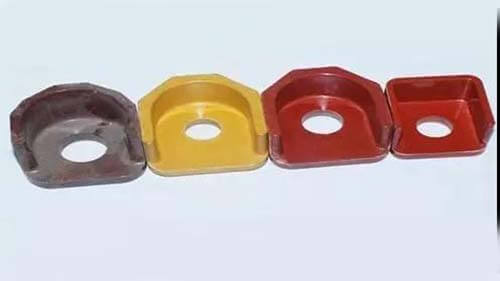After the read, you will learn about the 4 causes and factors affecting discoloration in injection molding.
What is the discoloration in injection molding?

Discoloration in injection molding is defined as a disparity in the original color of the plastic. This injection molded part defect can arise from many sources, such as overheating, contamination, or manufacturing error.
Plastic coloring products are subject to discoloration in injection molding by various factors. The discoloration in injection molding of plastic coloring products is related to the light resistance, oxygen resistance, heat resistance, acid and alkali resistance of pigments and dyes and the characteristics of the resin used.
According to the injection molding processing conditions and use requirements of plastic injection molded products, the properties of the required pigments, dyes, surfactants, dispersants, carrier resins, and anti-aging additives should be comprehensively evaluated before selection in the production of masterbatches.
4 causes and factors of the discoloration in injection molding
1. Lightfastness of lightfastness colorants will affect the discoloration in injection molding
The light resistance of the colorant directly affects the fading of the products, outdoor products exposed to strong light, the light resistance (sunlight resistance) grade of the colorant used is an important indicator. The light resistance grade is poor, and the products will fade quickly.
Weathering products selected for light resistance level should not be less than six, preferably seven, eight, indoor products optional four, five.
The light resistance of the carrier resin also has a greater impact on the color change and UV-induced changes in the resin’s molecular structure after exposure to the discoloration in injection molding.
Adding UV absorbers and other light stabilizers in the masterbatch can improve the light resistance of colorants and colored plastic injection molded products.
2. Thermal stability of heat resistant pigments will affect the discoloration in injection molding
The heat stability of heat-resistant pigment refers to the degree of heat weight loss, color change, and fading of pigment under the injection mold processing temperature.
Inorganic pigments are composed of metal oxides and salts, which have good thermal stability and high heat resistance.
On the other hand, the pigments of organic compounds will change the molecular structure and cause a small amount of decomposition at a certain temperature. Especially for PP, PA, and PET products, the processing temperature is above 280℃.
When choosing colorants, we should pay attention to the heat resistance of pigments on the one hand and consider the heat resistance time of pigments on the other hand.
3. Anti-oxidation property will affect the discoloration in injection molding
Some organic pigments have degradation of macromolecules or other changes after oxidation and gradually fade, this process is the high-temperature oxidation in processing, and the second is the oxidation that happens when encountering strong oxidant (such as chromic acid root in chrome yellow).
The red color will fade gradually after the color precipitate, azo pigment and chrome yellow are mixed.
4. Acid and alkali resistant coloring plastic products will affect the discoloration in injection molding
The discoloration in injection molding of acid and alkali-resistant coloring plastic products is related to the chemical resistance of colorants (acid and alkali resistance, redox resistance).
Such as, molybdenum-chromium red is resistant to dilute acid but sensitive to alkalis, and cadmium yellow is not acid-resistant. These two pigments and phenolic resin to some coloring agents play a strong reducing effect, seriously affecting the coloring agent heat resistance, weather resistance, and discoloration in injection molding.
For the discoloration in injection molding of plastic coloring products, according to the processing conditions and use requirements of plastic products, the properties mentioned above of the required pigments, dyes, surfactants, dispersants, carrier resins, and anti-aging additives should be comprehensively evaluated before selection.
Besides the 4 Causes of Discoloration in Injection Molding article, you may also be interested in the below.
6 Common Plastic Injection Molding Process Techniques
What is Multi-material Injection Molding?
How to Increase the Brightness of ABS Plastic Products?
Hot Runner Injection Molding Defects and Troubleshooting
11 Analyses of Injection Molding Process Parameters
17 Injection Molding Problems And Solutions
